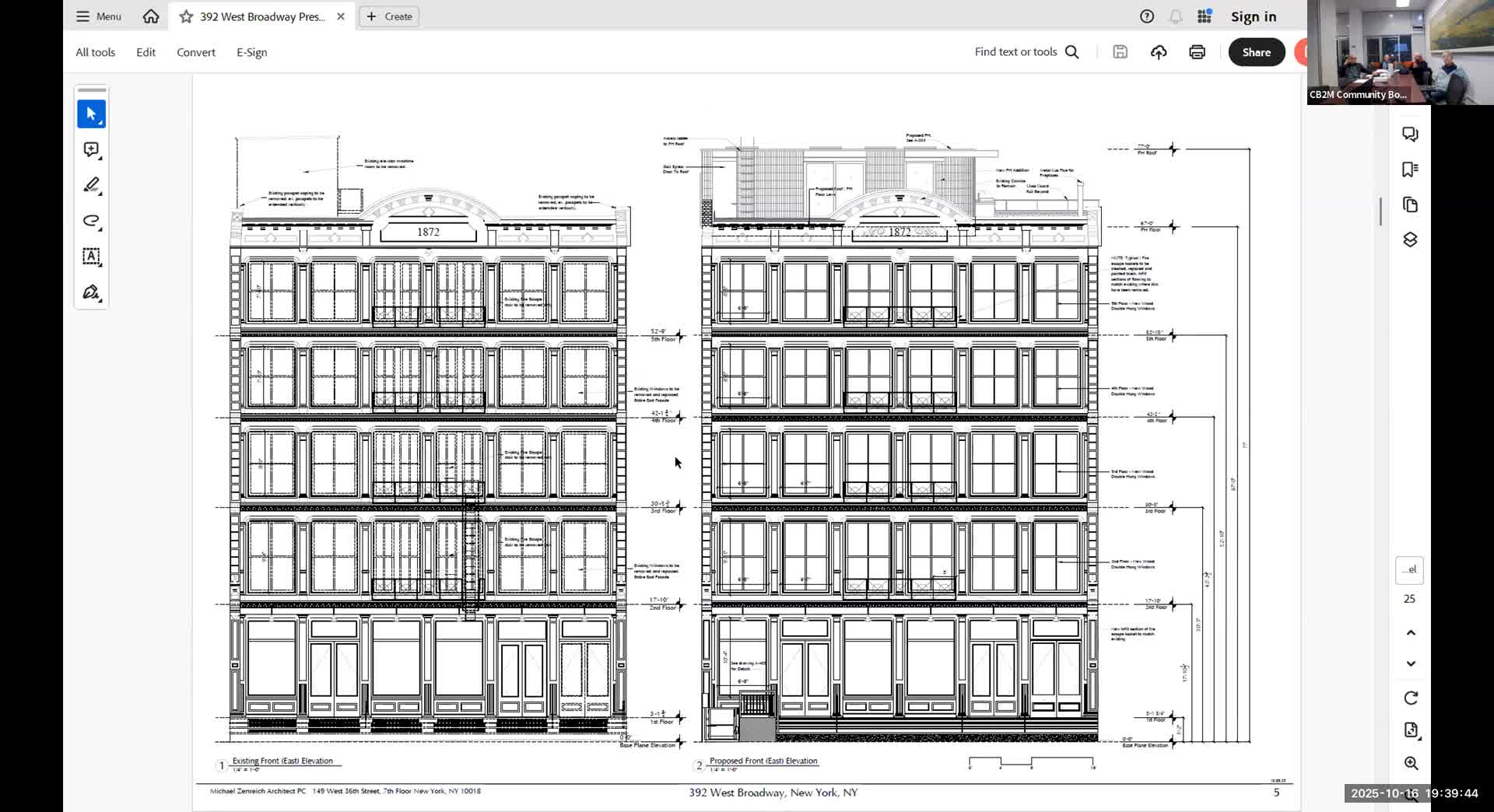Owner seeks legalization at 380 West Broadway for new storefront cladding, signage and 'turf' on stoop; committee objects to illuminated frames and turf
October 20, 2025 | Manhattan City, New York County, New York
This article was created by AI summarizing key points discussed. AI makes mistakes, so for full details and context, please refer to the video of the full meeting. Please report any errors so we can fix them. Report an error »

Owners of 380 West Broadway asked the committee to legalize several exterior changes that were completed without prior Landmarks approval: replacement storefront doors, champagne‑colored metal cladding around window frames, illuminated window frames behind the glass in a vivid yellow band, a large projecting banner and an artificial turf mat installed on the stoop platform.
Architect Behan Karahan explained the sequence: interior work and some storefront interior elements were completed according to permits, and an international retail tenant proposed an exterior look that was installed by the retail design team. The owner removed one door sign after the committee packet was submitted. The applicant said the turf and site alterations were intended to reduce loitering and to give the stoop a cleaner appearance.
Committee members said the illuminated yellow frame running close to the glass is not a precedent in the SoHo Cast Iron Historic District and that the large illuminated frames and bright perimeter lighting are inappropriate. Members also objected to the artificial turf on the stoop as a non‑historic, inauthentic material that alters a defining stoop plane. Several members recommended the storefront doors be reinstated to match the adjacent residential entry and that cladding colors be toned to match the historic palette; the applicant said the champagne color is a low sheen metal cladding and that the interior illuminated sign behind the glass was set back 18–20 inches as an interior display.
Public comments did not include objections about the stoop turf from neighbors at the meeting, although committee members urged the applicant to pursue less intrusive measures to address loitering. The committee concluded the illuminated window frames and turf were unacceptable; members signaled conditional tolerance for a restrained banner or modest signage if scaled to district norms and confirmed that final compliance will require Landmarks staff determination and potential permit regularization.
Architect Behan Karahan explained the sequence: interior work and some storefront interior elements were completed according to permits, and an international retail tenant proposed an exterior look that was installed by the retail design team. The owner removed one door sign after the committee packet was submitted. The applicant said the turf and site alterations were intended to reduce loitering and to give the stoop a cleaner appearance.
Committee members said the illuminated yellow frame running close to the glass is not a precedent in the SoHo Cast Iron Historic District and that the large illuminated frames and bright perimeter lighting are inappropriate. Members also objected to the artificial turf on the stoop as a non‑historic, inauthentic material that alters a defining stoop plane. Several members recommended the storefront doors be reinstated to match the adjacent residential entry and that cladding colors be toned to match the historic palette; the applicant said the champagne color is a low sheen metal cladding and that the interior illuminated sign behind the glass was set back 18–20 inches as an interior display.
Public comments did not include objections about the stoop turf from neighbors at the meeting, although committee members urged the applicant to pursue less intrusive measures to address loitering. The committee concluded the illuminated window frames and turf were unacceptable; members signaled conditional tolerance for a restrained banner or modest signage if scaled to district norms and confirmed that final compliance will require Landmarks staff determination and potential permit regularization.
View full meeting
This article is based on a recent meeting—watch the full video and explore the complete transcript for deeper insights into the discussion.
View full meeting
